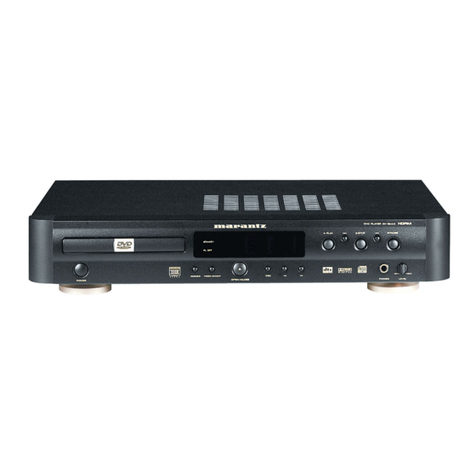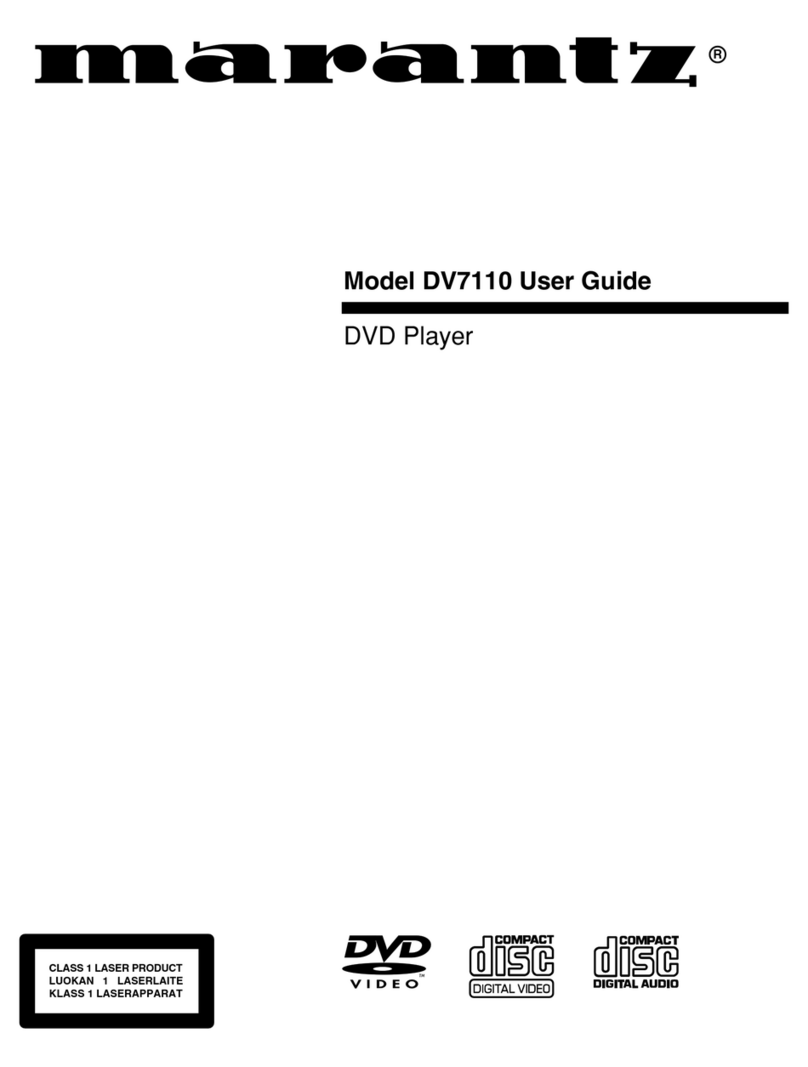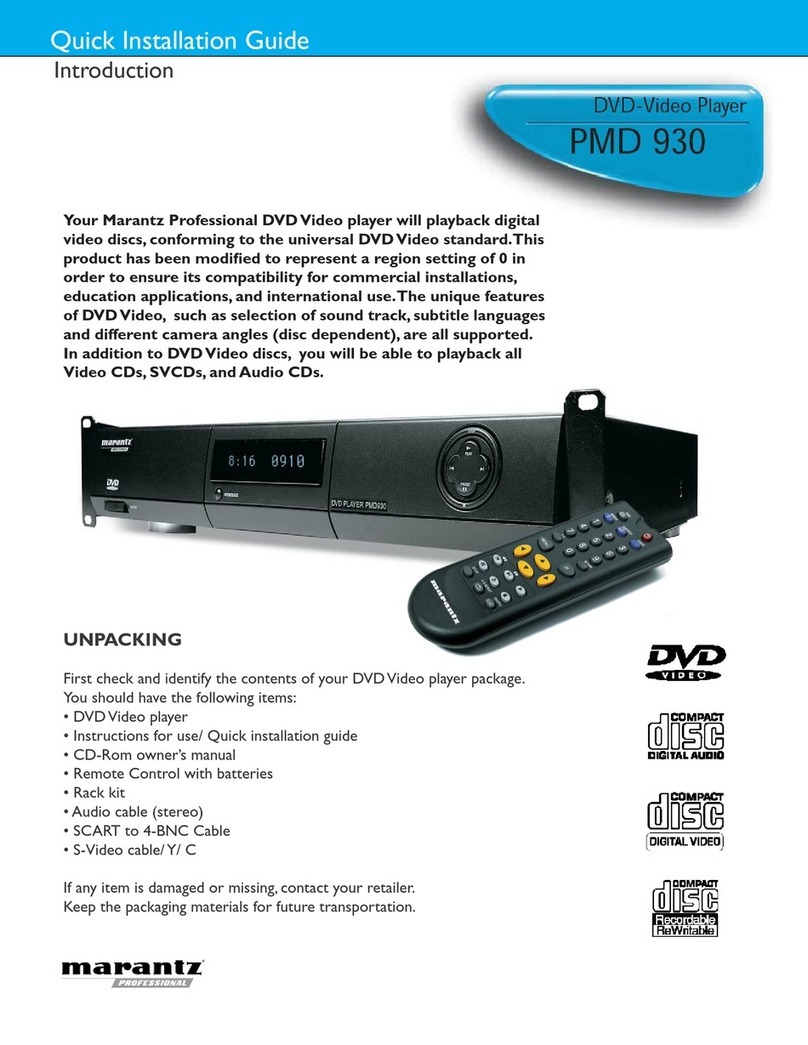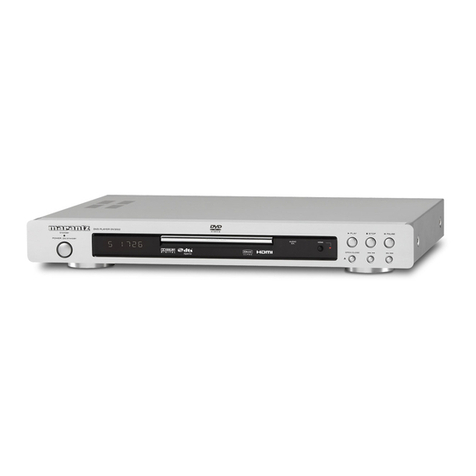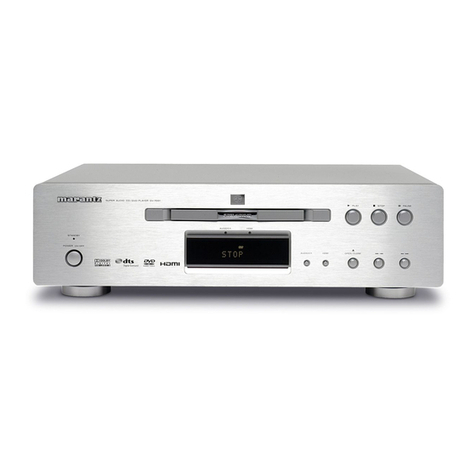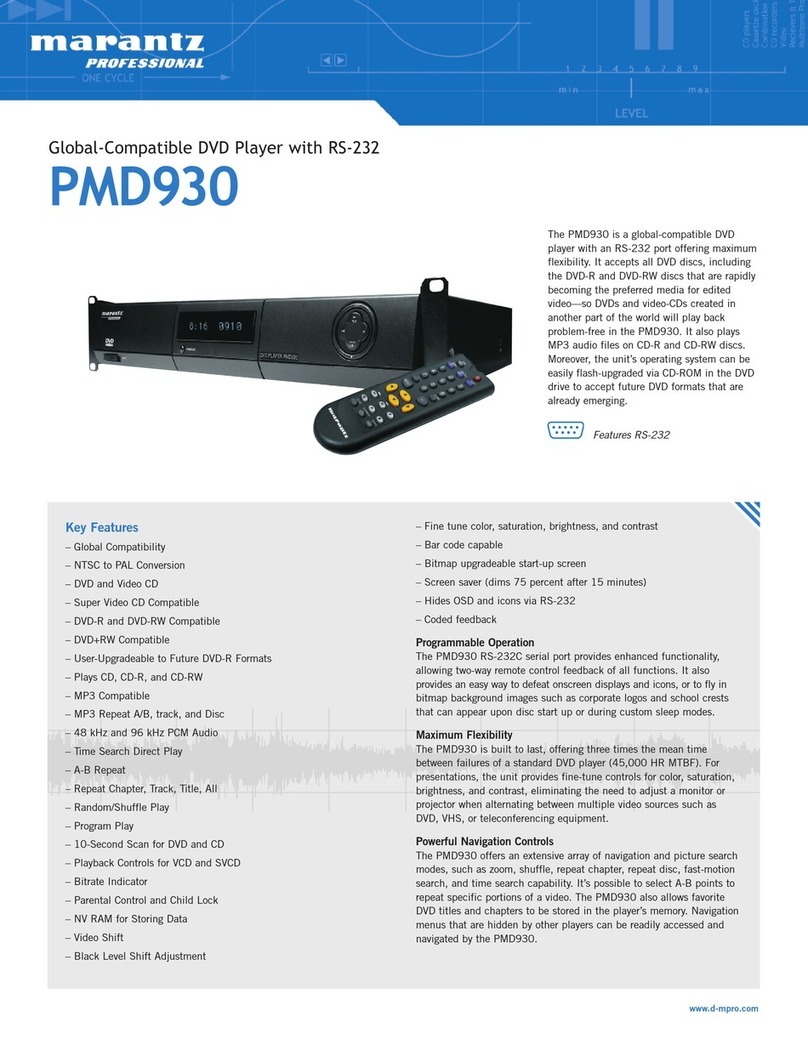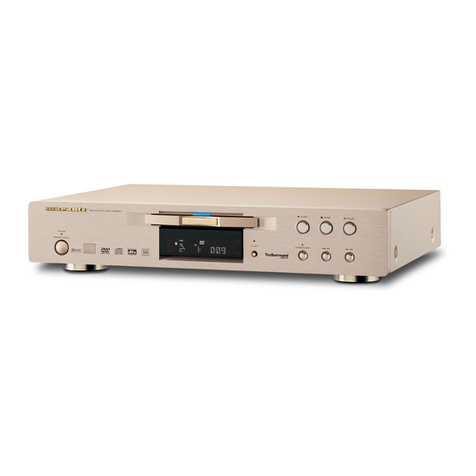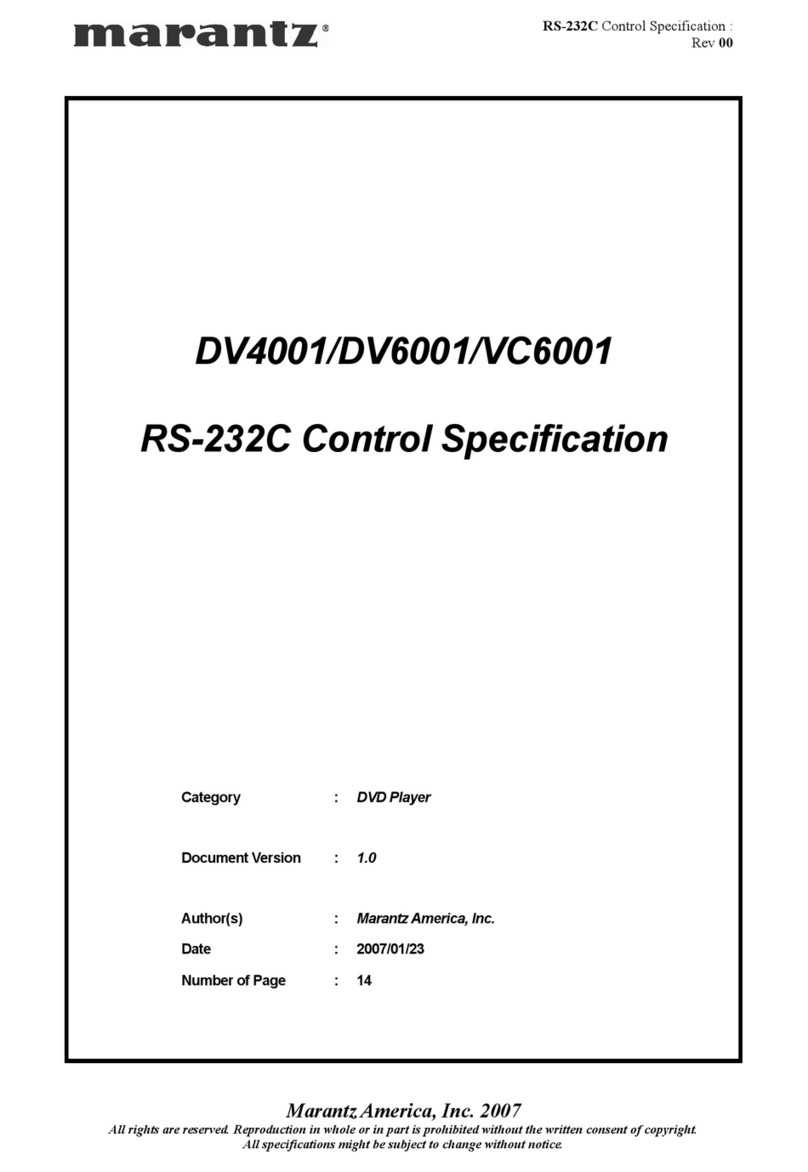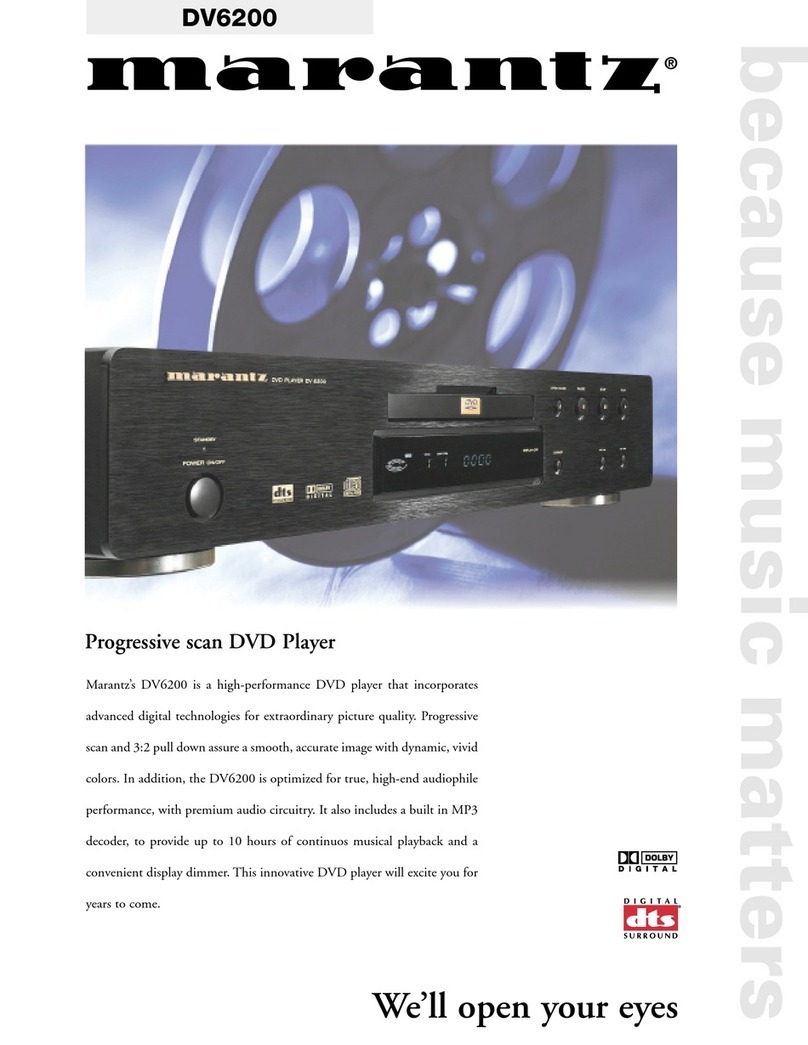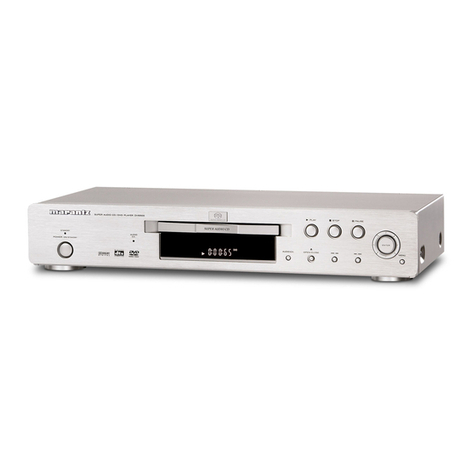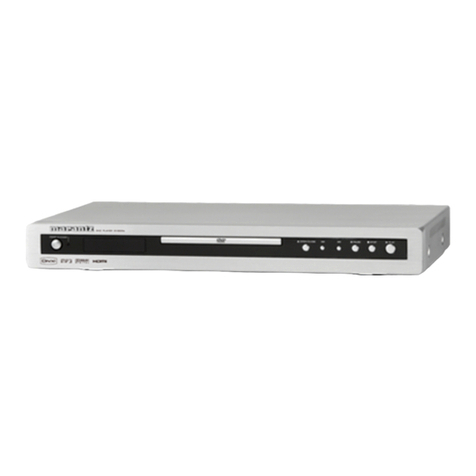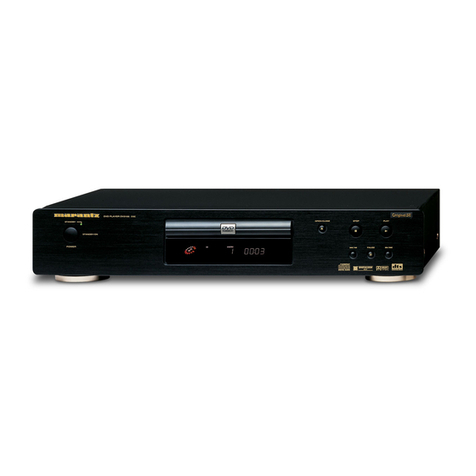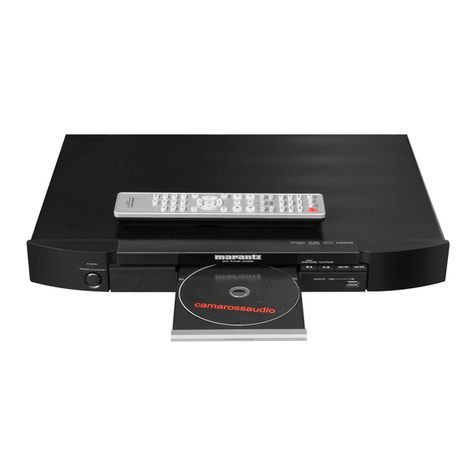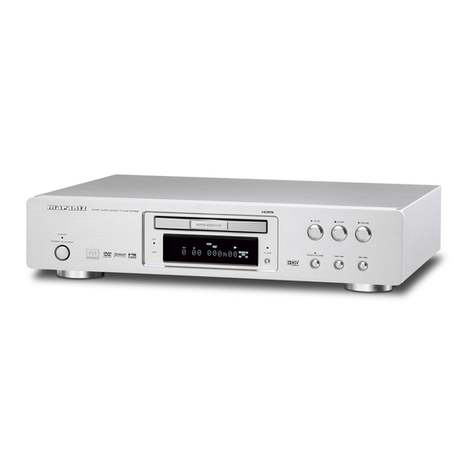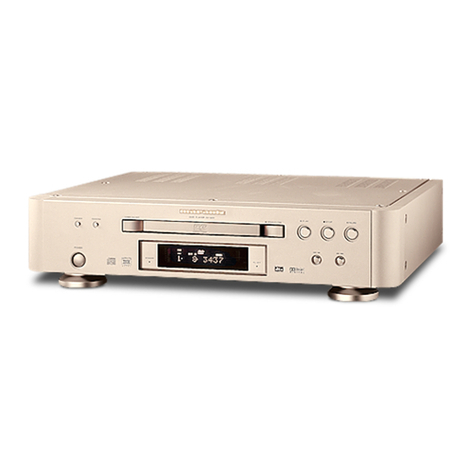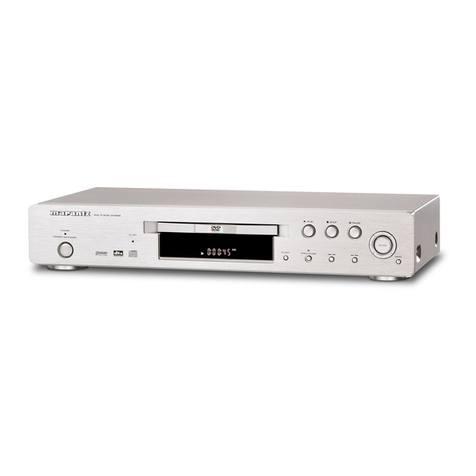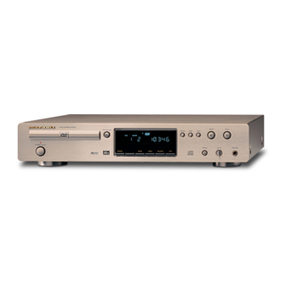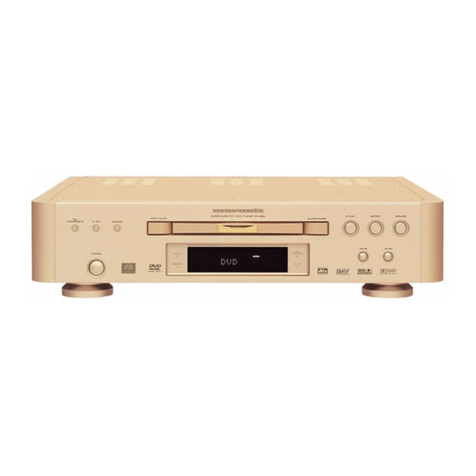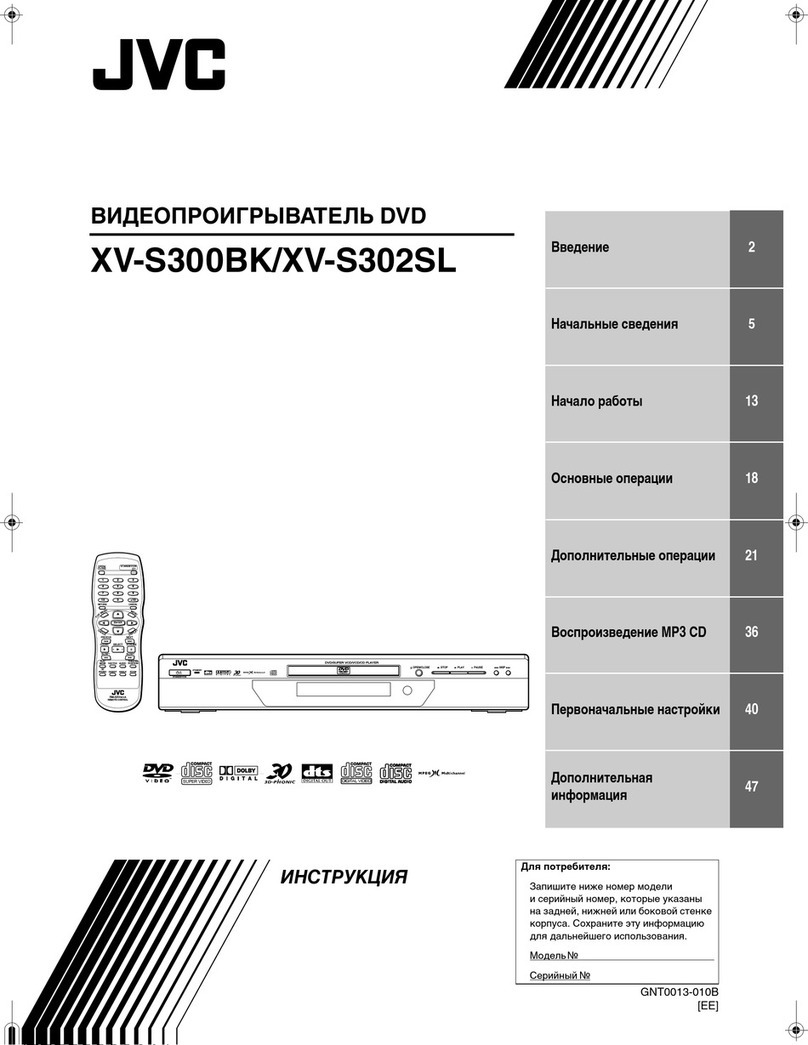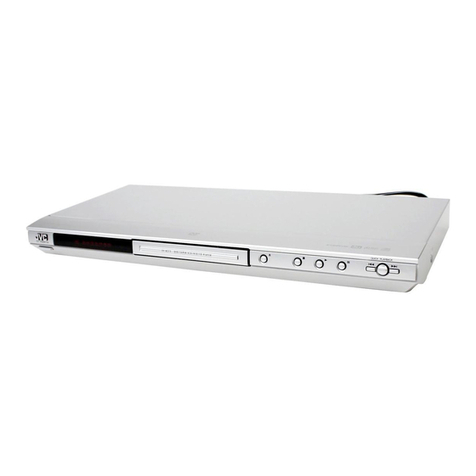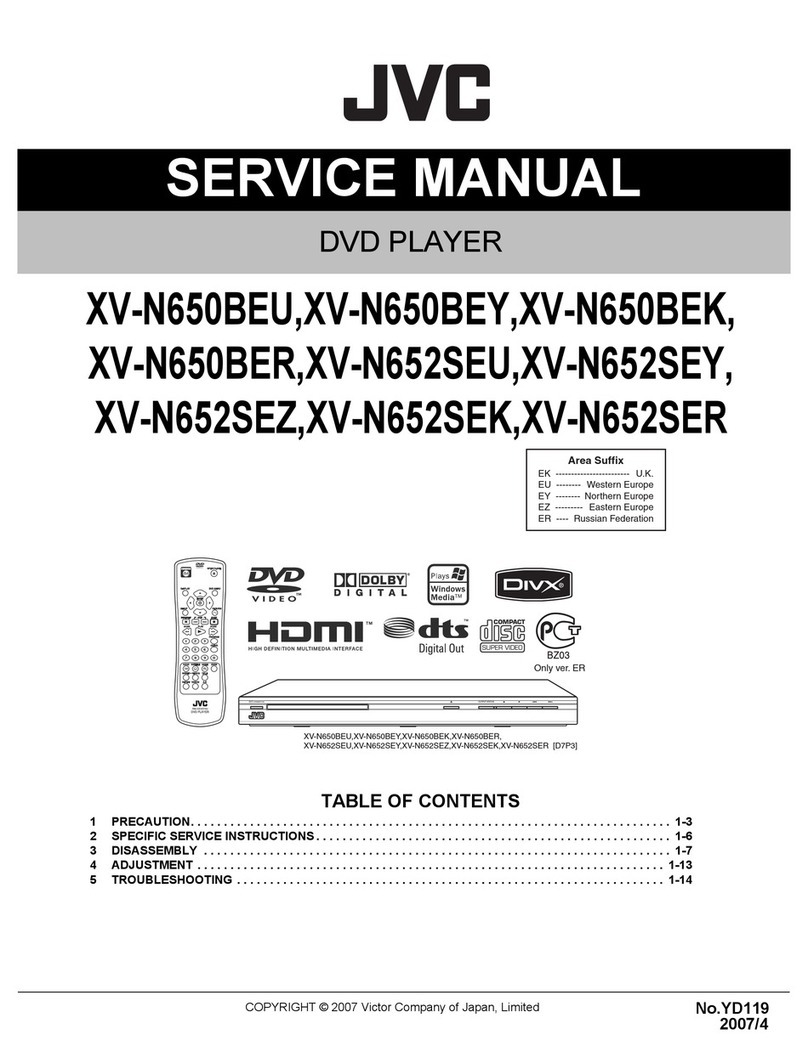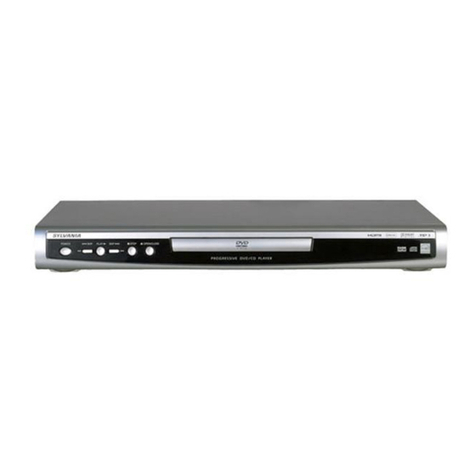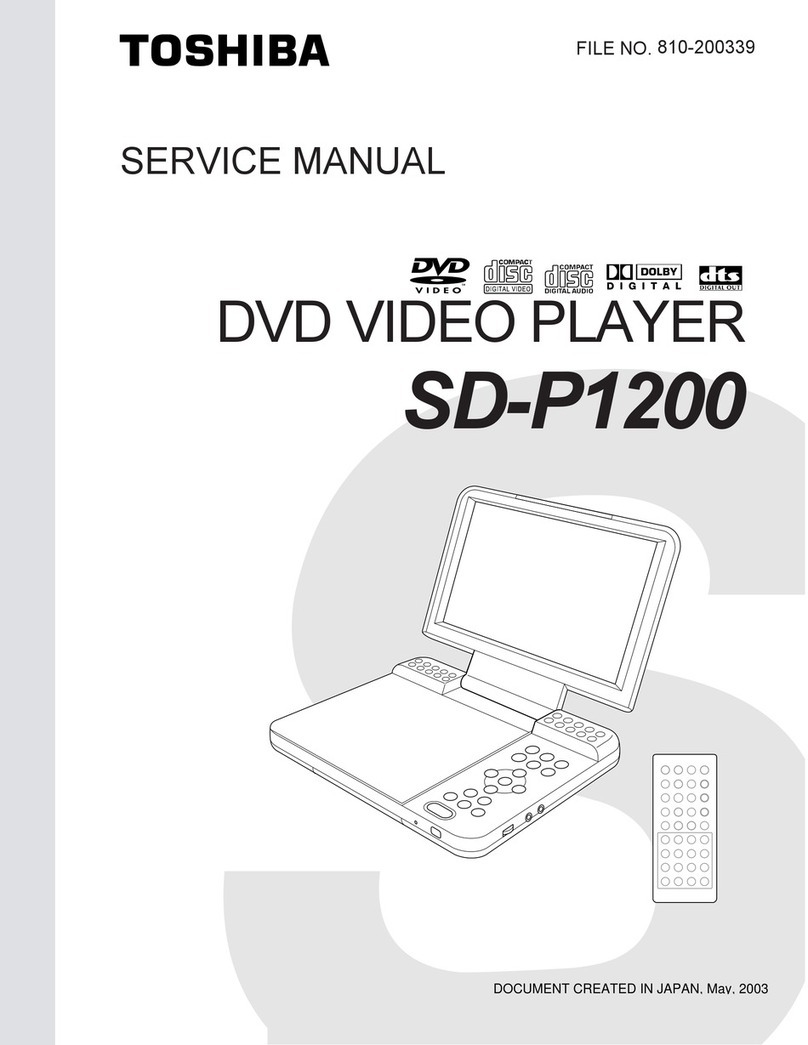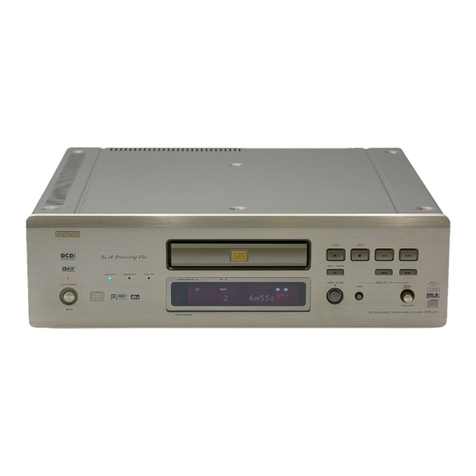
connected to a Krell HTS 7.1. There are several menus offering numerous adjustments and options that
allow the user to tweak both audio and video performance. I did all of my critical viewing through the
HDMI output set to 720p and my projector set to native mode, so that the DV9500 was the only component
doing the video processing.
Test Patterns
I began my viewing with a couple of test discs, the first of which was Joe Kane’s Digital Video Essentials.
Looking at the RP-133 test pattern, I noticed movement in the multi-burst portion of pattern when using my
reference Kenwood DV-5900M. The Kenwood was outputting a 480i signal through component cables. On
the Kenwood, I also noticed borders around the horizontal bars within bars portion of pattern. When
looking at the multi-burst vertical pattern, I noticed that horizontal edges of signal from the Kenwood were
cut off. When testing the Marantz DV9500 with the Pb & Pr sweep, 0.5 to 5.75 MHz, the Marantz
maintained resolution throughout the entire pattern and the Kenwood turned solid gray about two-thirds of
the way through the pattern. Overall, the Marantz appeared to be much more stable on the high-resolution
patterns, providing a much clearer picture.
I then placed the Silicon Optix Test Disc into the Marantz. On the opening test screen, the color bars were
stable, with no movement in the higher frequency portion of the pattern. On the “Diagonal Jaggies” de-
interlacing test, the Marantz did well, showing only signs of jagged edges at less than 10 degrees; with the
three-bar test, only the bottom bar showed any signs of being jagged. On the motion adaptive de-interlacing
waving flag test, the Marantz did very well, with the flag flowing smoothly. The bridge showed good detail
in the bricks and grass, with noticeably more resolution than the Kenwood. On the noise reduction tests, the
Marantz again did a great job. Overall, the picture was extremely close to still frame. On the simulated
digital transmission, there was very slight smearing behind the roller coaster. On the 3:2 detection test, the
Marantz locked onto the signal but moiré pattern in the stands was visible for perhaps half a second before
it did so. The last portion of the test disc is comprised of various cadence tests on which the Marantz
DV9500 performed very well, with only the occasional minimal jagged edge.
Music and Movies
I then switched to real source material and played a DVD from Season One of “Alias,”
something my wife appreciated much more than the test discs. While the characters were
in an industrial park with larger tanks, I noticed mild jagged edges on a steel band that
went around the tank. These were more noticeable when paused and much less so during
playback. While the recording quality of the “Alias” discs was not extremely consistent,
when watching any of the better recorded segments, the Marantz seemed to be well
balanced across the color spectrum, with no noticeable aberrations.
While watching “The Incredibles” (Walt Disney Home Entertainment), I saw no signs of the
chroma bug. The color fields were uniform, with very clean transitions and no noise. Overall,
while viewing several rental discs and a few from my collection, the blacks were slightly better
with the Marantz than with my Kenwood and the Marantz’s picture was consistently sharp and
stable with smooth, accurate colors.
I began the audio portion of my review by listening to some regular old red book CDs. I first
played Janet Jackson’s “Go Deep” from the Velvet Rope album (Virgin Records). This track
is rich with solid, detailed bass that the Marantz replayed better than any other player I have
had in my system. The midrange was relaxed and natural, with highs that fell only slightly
shy of what I have heard on the best and most expensive CD players in terms of airiness and
extension.
M
track “Your Latest Trick,” the clean midrange did well with Knopfler’s voice. The high
end of the cymbals was clean and clear, with the entire package combining for a solid,
well-placed soundstage.
oving on to Dire Straits’ Brothers in Arms (Warner Brothers) album, the classic demo
2
